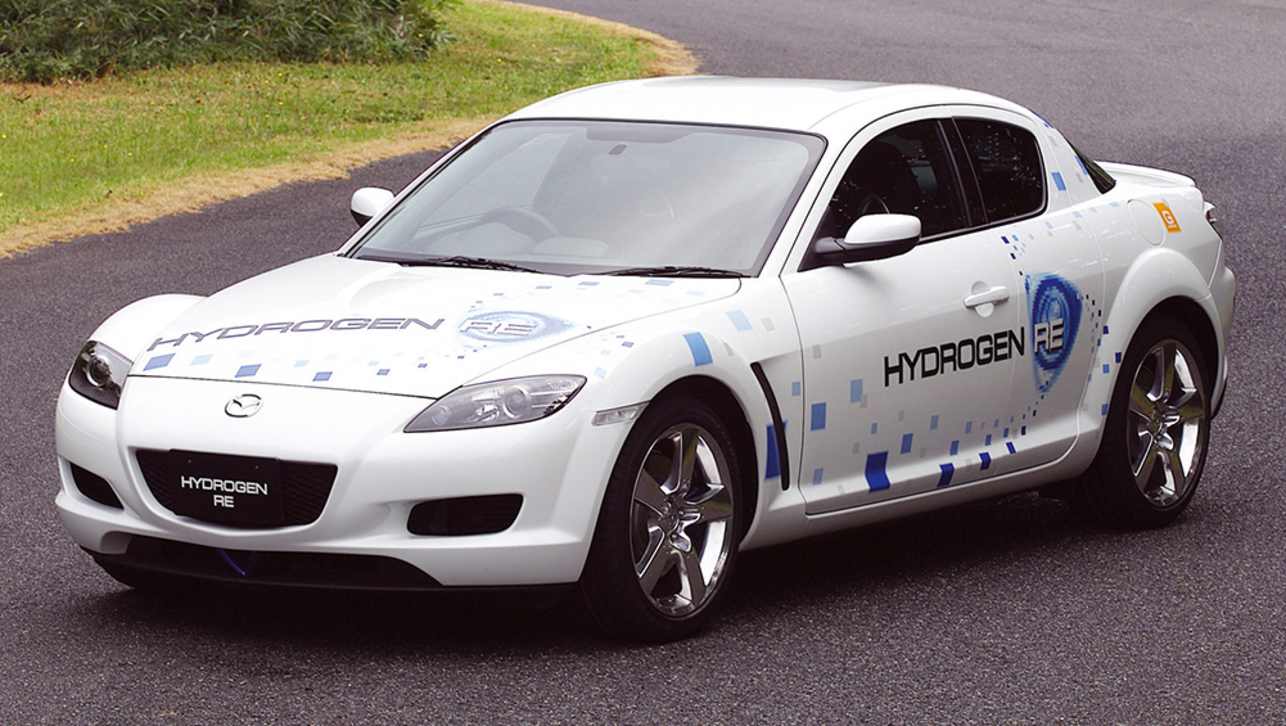Mazda would dearly love to make another rotary-engined sports car. Tappet-heads the world over would love Mazda to do precisely that. And, based on reports coming out of Japan, the rotary concept is definitely not dead and buried. But if it happens, there’s plenty of evidence to suggest that the end result would probably be in the form of a hydrogen-electric hybrid.
Earlier this year, Mazda announced that the rotary would be pressed back into service in its forthcoming MX-30 crossover, due probably sometime in 2022.
The rotary element will, however, not drive the vehicle’s wheels and amount to a range-extending engine, with the bulk of the vehicle’s running to be all electric (Mazda is quoting a driving range of about 200km).
Given that Jaguar proposed – as long as a decade ago – a pair of diesel-burning turbines as range-extenders for its still-born C-X75 concept car, the idea of a rotary range-extender isn’t so crazy.
But what isn’t being talked about is the possibility of reviving the rotary concept as a hydrogen-powered solution.
Hydrogen, once touted as the real alternative to petrol, kind of lost its way for a while there, as all-electric and hybrid vehicles claimed centre stage.
But burning hydrogen in an internal-combustion engine (as opposed to using hydrogen in a fuel-cell) is still seen in some circles as a viable alternative means of propulsion and, perhaps by accident, the rotary seems like a natural fit for hydrogen fuelling.
A hydrogen rotary would retain all the rotary concept’s virtues, including fewer moving parts and being able to extract large amounts of torque and power from a physically small and light package.
But more importantly, hydrogen would also allow the rotary to sidestep its biggest problem over the decades; dirty tailpipe emissions.
That’s because the only emissions from burning hydrogen are water (at a tailpipe level, anyway).
Of course, that’s in laboratory conditions and, in reality, the heat of the internal-combustion process would involve the production of some oxides-of-nitrogen (NOX).
They could, however, be a fraction of those from a petrol engine, and the petrol’s carbon-based emissions would be zero in a hydrogen-burner (again, at a tailpipe level).
Hydrogen has a much wider stoichiometric band than petrol, meaning it can burn successfully over a much greater range of air-fuel mixtures.
And that means that there would simply be a smaller volume of hydrogen being burnt to create that NOX.
Interestingly, hydrogen’s natural sweet spot in terms of air-fuel ratio is about 34:1, very similar to the leanest mixture achieved by Mazda’s own SkyActiv X engine, which features compression-ignition (conventional petrol engines need about 14.7:1 for complete combustion).
For fans of sports cars, all this means that a hydrogen-burning rotary engine would still provide the fun and noise of the beloved internal-combustion engine but without the enviro-guilt.
Well, without some of the guilt, anyway.

At the moment, a huge percentage (something like 95 per cent) of the world’s hydrogen is derived from fossil fuels being used to create hydrogen by processing methane and the gasification of coal.
And while the hydrogen end result burns in an engine without carbon-dioxide emissions, carbon dioxide is, in fact, produced as a by-product of making the hydrogen from the hydrocarbons such as methane.
At which point, you’re simply moving the harmful emissions rather than eliminating them.

Splitting water molecules with renewable energy stands to create much cleaner hydrogen, but infrastructure for such an industry is not with us on a large enough scale yet.
Mazda has, of course, identified the potential of hydrogen power, but hasn’t, in a production sense, really done a whole lot with it.
Back in 2003, it built a batch of RX-8 coupes called the Hydrogen RE, capable of running on either hydrogen or normal petrol.

The decision to make the vehicle dual-fuel was a response to range anxiety associated with a lack of hydrogen refuelling infrastructure.
By 2005, the concept had been approved for road use in Japan and leased to a very small number of corporate customers, although a few examples were also sent to Norway, a leader in hydrogen road-transport technology.
But Mazda’s dalliance with hydrogen power goes way, way back.

To the 1970s, in fact, when various tests were carried out on rotary-engined cars to assess their emissions and performance.
Of course, even today, the future of hydrogen is at the mercy of infrastructure and, in this country, government inertia over doing anything about it.
We’ve already seen the Australian federal government dragging its feet on fast-charging stations for electric cars, and there’s no reason to suggest a serious approach to a hydrogen future would be any more forthcoming.







.jpg)


.jpg)





.jpg)













.jpg)
Comments